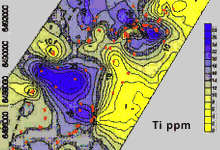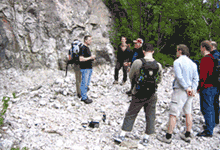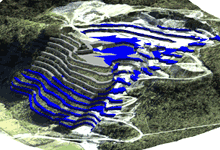Mineral production and HSE
Mineral production and HES
Norwegians are major consumers of mineral resources. At the same time, Norway has a varied mining industry and large potential mineral resources. New and emerging energy technologies, including wind and solar power, depend to a large extent on mineral-based materials with unique properties. Hence, an expanding mining industry is a prerequisite for implementing the green shift and achieving a more sustainable society. As the only University in Norway focusing on mineral production, the Mineral Production and HSE Research Group at IGP has a national responsibility to maintain and develop the required competence within this field.
From mineral deposit to final product
At NTNU, Mineral Production comprises the entire value chain from the geological resources to the final mineral products. This includes modelling and evaluation of mineral deposits, mine planning, process mineralogy and mineral processing to product development, tailings management and remediation. This responsibility also includes an integrated focus on health, safety and environment.
The Government’s Mineral Resource Strategy emphasises the need for more research on mineral production, and during the last few years a number of new NRC funded projects have emerged. This has resulted in a dynamic research group with an increasing number of PhD candidates. The research is conducted in close cooperation with Industry. Several of the new research projects span large parts of the value chain. The InRec project focuses on geometallurgy, a concept that seeks to utilise information regarding the geological and mineralogical variations in a mineral deposit in order to optimize the production process. Hence, InRec will develop methodology that will result in increased recovery of valuable products from Norwegian mineral deposits.
Norway is also in possession in huge off-shore mineral resources. Researchers at the IGP have estimated that the value of these resources could be close to 1012 NOK. However, the production challenges are formidable. This is the backdrop for the MarMine project. During the summer of 2016, samples from mineral deposits on the North Atlantic sea floor were collected using ROVs. The samples will be used to evaluate the technical, economical and environmental aspects of deep sea mining and processing of the valuable ore.
Mineral processing, i.e. crushing, grinding and mineral separation is a central component of the value chain, and most of the Research Group’s scientific output originates from this field. Development of more efficient processing methods is crucial in order to increase the recovery of valuable components and to minimize the negative effect on the environment . This applies to both primary sources (mineral deposits) and to recycling of mineral based waste materials. The Mineral Processing Laboratory at NTNU, which is nationally unique , is continuously working to find better and more environmentally friendly processing solutions. Flotation, processing of fine particles and use of waste materials constitute the main focus areas.



